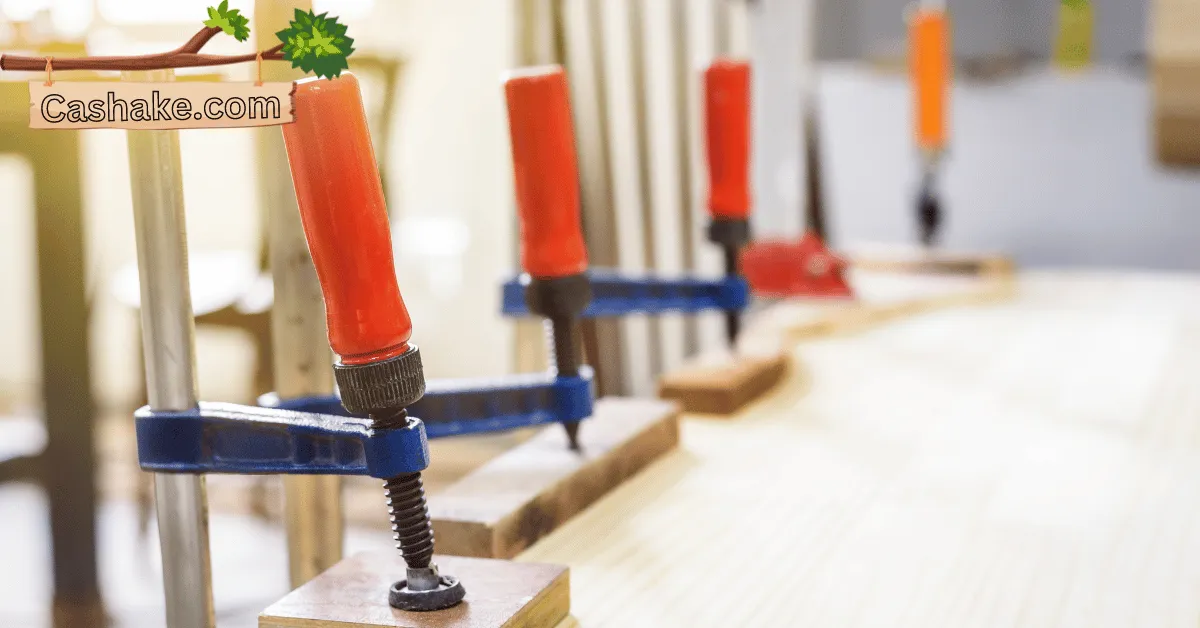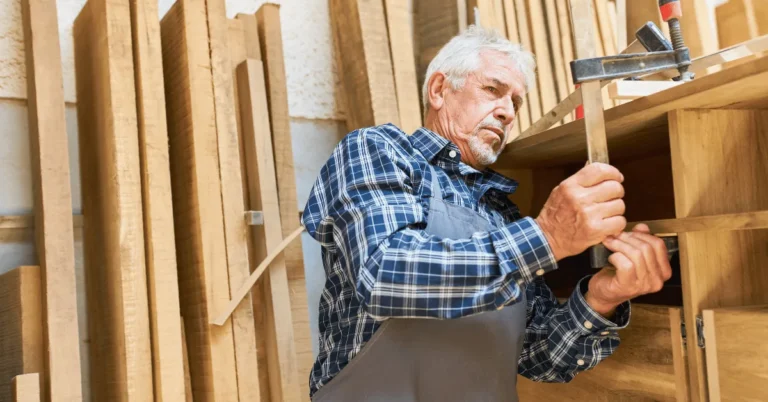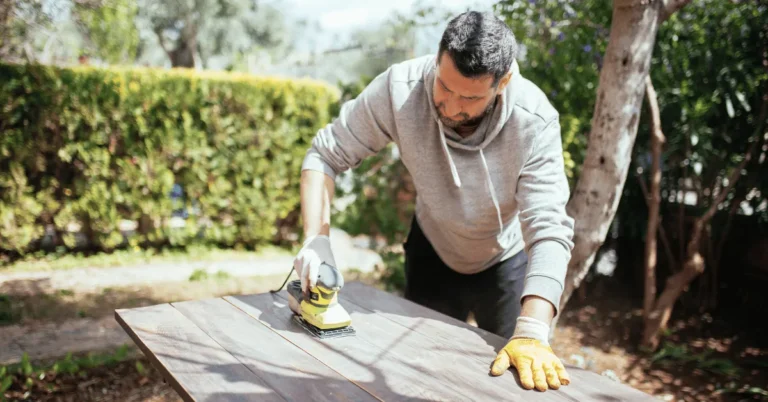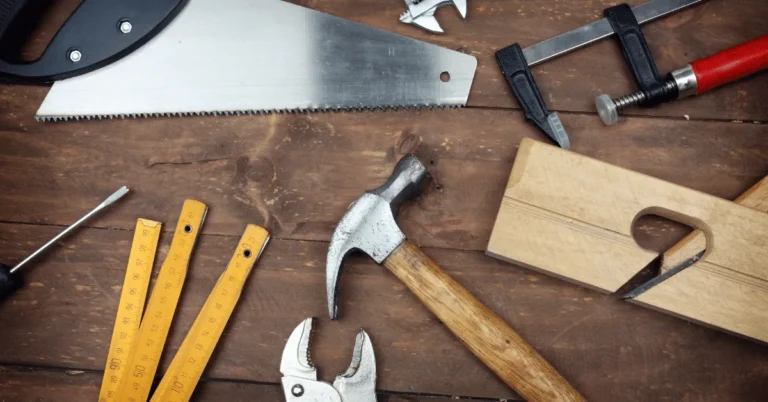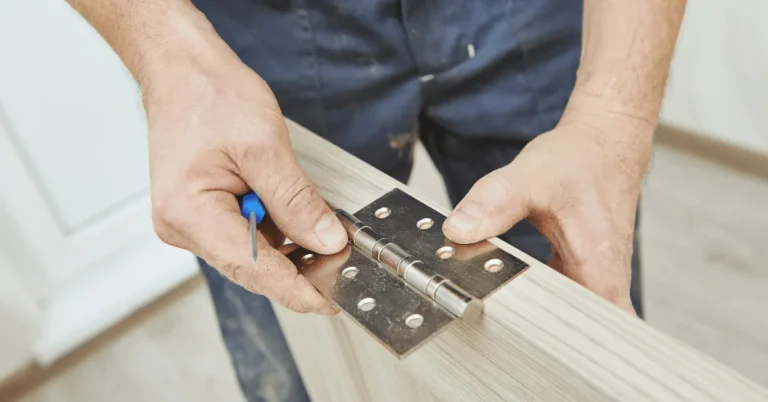How Do You Clamp a Large Piece of Wood Without Clamps?
Hey there, welcome to the exciting world of woodworking! In this article, we’re diving into the craft of securing wood without those old-school clamps.
As someone who loves working with wood, I’m here to walk you through some clever tricks, project tips, and handy troubleshooting advice for keeping those large pieces of wood in place.
So, wave goodbye to the limitations of clamps and get ready to unleash your creativity on your woodworking projects!
At the end of this article, your this question will be solved: How do you clamp a large piece of wood without clamps?
Key Takeaways
- Secure wood without clamps using heavyweights, straps, or wedges strategically.
- Painter’s tape or masking tape for temporary wood bonding.
- Vise offers safe clamping but applies gentle pressure for protection.
- Choose a clamping method based on wood type, size, and joint style.
- Bar clamps, pipe clamps, and quick-release clamps for versatile use.
- Precision joints like dovetails benefit from specialized clamping fixtures.
- Use cauls for even pressure; secure with weights, cords, or ropes.
- Opt for slow-drying glue for adjustments and precise positioning.
- Get inventive with caulk guns, body weight, or specialized jigs.
- Share woodworking knowledge and tips to enhance the community.
How Do You Clamp a Large Piece of Wood Without Clamps? (Different Ways)
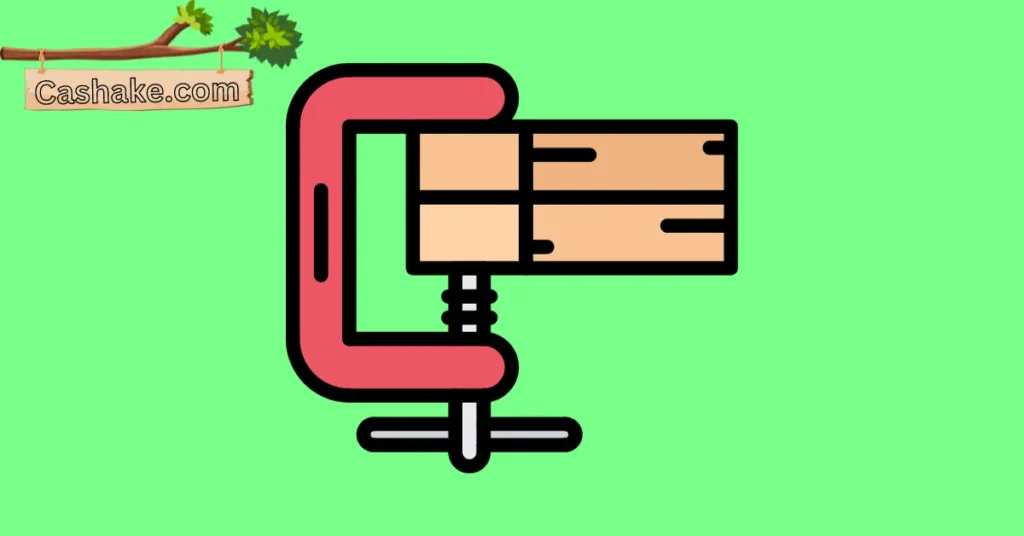
Hey there, DIY enthusiast! Need to clamp wood but can’t find your trusty clamps? No worries, we’ve got some crafty solutions for you:
- Heavyweights: Grab some heavy stuff like bricks, books, or dumbbells. Place them strategically on your wood pieces to apply pressure while the glue does its thing. Just make sure the weight is balanced to avoid any wood wiggling.
- Strap It Down: Got straps or bungee cords lying around? Wrap ’em around your wood and pull them tight. It’s like giving your project a big, secure hug.
- Wedge Wizardry: If you’ve got wedge-shaped wood bits, slide ’em between your pieces and gently tap with a mallet. Voila, instant pressure to help with the bonding.
- Tape Trick: The painter’s tape or masking tape can hold smaller wood bits together temporarily. Keep in mind, though, it’s not as strong as clamps, so it’s best for quick fixes.
- Vise Advice: Got a vise? Clamp away! Just remember, don’t go all Hulk on it; gentle pressure is the way to go to keep your wood safe.
For bigger projects, stick to your trusty clamps. But in a pinch, these tricks can be your woodworking superheroes.
And here are some bonus tips:
- Dry and Clean: Make sure your wood is dry and clean before applying glue for the best bond.
- Glue It Right: Spread that glue evenly on both surfaces to get a super-strong connection.
- Quick Clamp: Once the glue’s on, don’t dilly-dally – clamp those wood pieces together ASAP.
- Check-In: Keep an eye on your clamped wood to make sure it stays snug during the drying party.
- Full Dry: Let the glue dry completely before you unleash your awesome woodworking creation.
With a sprinkle of creativity, you can be a wood-clamping magician, even without the fancy clamps.
Which method is best for different types of projects?

Clamping wood without clamps? No problem! Here are a few easy methods, depending on your project:
- Heavyweights: For small to medium-sized wood pieces, place heavy objects on top, like bricks, books, or dumbbells. Just make sure the weight is evenly distributed.
- Straps: Got straps or bungee cords? Wrap ’em around your wood and pull tight. It’s like giving your project a big, secure hug.
- Wedges: If you’ve got wedge-shaped wood bits, slide ’em between your pieces and gently tap with a mallet. Voila, instant pressure!
- Tape: Painter’s tape or masking tape can hold smaller wood bits together temporarily. Just keep in mind it’s not as strong as clamps, so it’s best for quick fixes.
- Vise: Got a vise? Clamp away! Just remember, don’t go all Hulk on it; gentle pressure is the way to go to keep your wood safe.
For bigger projects, stick to your trusty clamps. But in a pinch, these tricks can be your woodworking superheroes.
Which method is best for you? It depends on the type of project you’re working on and the size and shape of your wood pieces. If you’re unsure, always err on the side of caution and use a more secure method, like straps or a vise.
How to choose the right clamping method?

Alright, let’s talk woodworking and clamps – because who doesn’t love a good, sturdy clamp to keep things together? Here’s the lowdown in a more laid-back style:
1. Wood Type & Size: First off, size matters. Big, heavy pieces need more clamping oomph than their smaller, lighter buddies. And don’t forget, hardwoods are the tough cookies – they usually need more squeeze than softwoods.
2. Joint Style: Different joints, different strokes. For instance, butt joints (sounds funny, right?) need a firmer grip than those fancy dovetail joints. Precision, my friend!
3. End Goal: Think about what you’re aiming for. If you want a super-smooth flush joint, you’re gonna need to crank up the pressure. But if you’re just waiting for glue to dry, you can take it easy.
Now, let’s meet the clamps:
Bar Clamps: These are like the all-purpose champs of the clamp world. They fit all sorts of wood thicknesses, so they’re great for most projects.
Pipe Clamps: Kind of like bar clamps’ beefier cousins. They use pipes for that extra muscle, but they’ll cost you a bit more.
Quick-Release Clamps: Need something fast and easy? These are your go-to for quick adjustments and small projects.
Band Clamps: When you’re dealing with big, intricate stuff that needs a serious grip, these bands have your back.
Jigs and Fixtures: Specialized clamps for the fancy stuff – like miter joints, dovetail joints, and box joints. They’re like the precision surgeons of clamps.
Now, if you’re not sure which clamp to pick, here’s a rule of thumb: it’s better to go a bit overboard with pressure than to be too gentle. More pressure usually means a safer bet for secure and sturdy woodworking. So go ahead, clamp it like you mean it!
Tips and tricks for clamping wood without clamps

Alright, let’s dive into the world of clamping wood when you don’t have clamps on hand. It’s a bit like MacGyver meets woodworking. Here are some nifty tricks:
1. Weights, Baby: Grab some heavy stuff – books, bricks, or that weight bench you never use – and stack ’em on your glued wood. Just make sure it’s all evenly placed for that sweet, even pressure.
2. Bungee Cords or Rope: Your everyday bungee cord or a sturdy rope can double as a makeshift clamp. Wrap ’em around your wood and give ’em a good tug until things are snug.
3. Vise to the Rescue: If you’ve got a workbench vise collecting dust, it’s time to put it to work. Pop your wood in there and tighten it up until it’s gripped securely.
4. Wedges for the Win: Wedges are like the duct tape of the woodworking world. You can use ’em to clamp two pieces at an angle or secure wood in a vise. They’re pretty darn handy.
5. Cauls for Precision: Cauls, those flat pieces of wood, are your besties for even pressure. Pop ’em above and below the glued area, then secure ’em with weights, cords, or rope.
Here are some bonus tips to make your wood clamping adventures even smoother:
- Go for a slow-drying glue. It gives you more wiggle room to position things just right.
- Give those wood pieces a gentle tap with a mallet. It helps with alignment and spreads that glue nice and even.
- Keep an eye on your makeshift clamps to make sure they’re still doing their job.
- And remember, patience is key. Glue needs its beauty sleep, so don’t rush it. Let it dry up completely before you unleash your handiwork.
So there you have it, clamping wood without clamps: a mix of resourcefulness, a dash of patience, and a sprinkle of MacGyver magic!
Troubleshooting common problems

Wrangling a big old piece of wood without a clamp might sound like a head-scratcher, but fret not, we’ve got some savvy solutions to common hitches.
Issue 1: The wood’s going rogue.
Keep that work surface level, and make sure that wood’s got nowhere to go. You can even get a bit crafty with a caulk gun or plop a hefty weight on top to hold things down while the glue throws its gluey party.
Issue 2: Wood’s got the bends.
Before you glue, give it the straight-edge test. If it’s doing the limbo, consider a bit of planning or shimmy-shim-shim to get it back in line. Clamping in the opposite direction of the bend might also work its magic.
Issue 3: The glue’s playing favorites.
Give your glue talkin’ to. Spread that sticky stuff evenly on both sides of the joint. If it’s being stubborn, bring in the big guns – a hair dryer or a heat gun can speed things along.
Issue 4: The bond feels weak.
Don’t cut corners with the gluing and clamping, my friend. For the big leagues, think epoxy or polyurethane glue. They’re like the superheroes of the adhesive world.
And here are some extra nuggets of wisdom for your wood-clamping adventures:
- Mix and match your clamping methods. Think outside the box with caulk guns, weights, or even your body to keep things in check.
- Get your creative juices flowing. Ropes, and bungee cords – they can do the clamp job in a pinch.
- Be patient, grasshopper. This whole wood-clamping deal can take some time. Don’t be afraid to try different tricks up your sleeve.
If the struggle’s real and you’re wrangling a beast of a wood piece, remember, there’s no shame in investing in some trusty clamps. They’re the sidekick every woodworker needs.
Important FAQs
Yes, you can use common household items like books, bricks, or even heavy dumbbells as heavyweights to apply pressure and secure wood pieces. Just ensure they are evenly distributed for effective clamping.
Safety is essential. Ensure the weights are secure and won’t tip over during the clamping process. Always keep your hands and body clear to avoid accidents.
Absolutely! Bungee cords or sturdy ropes can be wrapped around your wood and tightened to provide a secure hold. This method is effective for larger projects.
Painter’s tape or masking tape is suitable for temporarily holding smaller wood pieces together. Keep in mind that these tapes are not as strong as clamps and are best for quick fixes.
For precision joints like dovetails, consider specialized clamping methods or fixtures designed for such joints. These ensure accuracy and a tight fit.
Final Thoughts
In a nutshell, the world of woodworking is bursting with potential, and sometimes, you’ve got to get a little inventive when it comes to holding those wooden pieces together.
We’ve dived into a bunch of clever methods, like using heavy stuff, bungee cords, or giving your trusty vise a workout. These nifty tricks can be a real lifesaver when your usual clamps are nowhere to be found.
Just remember, the right way to clamp depends on what you’re crafting, the type of wood you’ve got in hand, and what you’re aiming for.
Size, joint style, and your end goal all play a role – whether you’re going for a sleek finish or just waiting for the glue to set.
We’ve given you the lowdown on different clamp options, each with its strengths, to help you make the smart choice.
Now it’s your turn to spill the beans on your woodworking adventures and share your tips and tricks. Have you given any of these methods a shot? Or do you have your secret sauce for clamping that you’d like to pass on to your fellow woodworkers?
How Do You Clamp Something Bigger Than a Clamp? (SOLVED)
Having explored creative wood-clamping solutions, it’s time to dive deeper! Discover how to clamp something bigger than a clamp with our solved guide. Read it now for expert insights.
